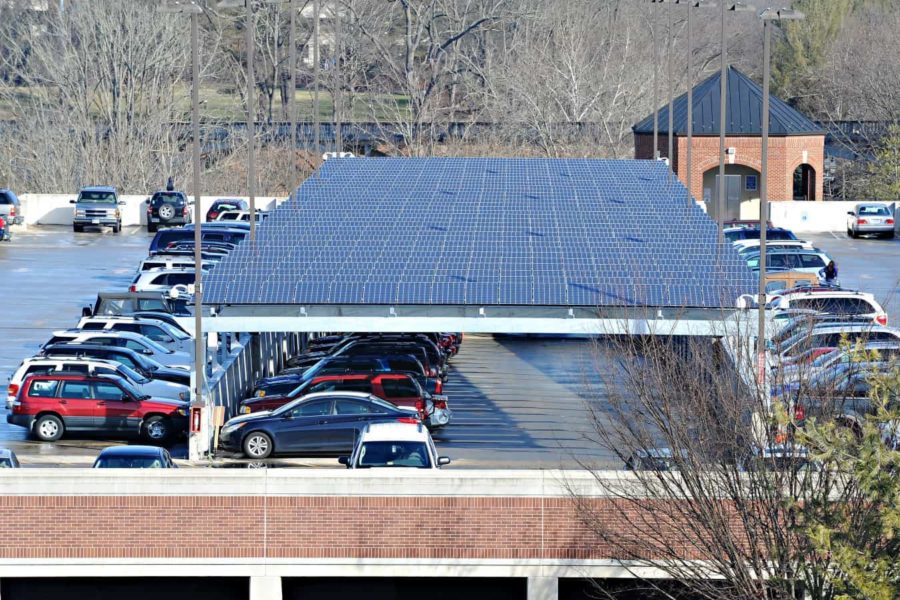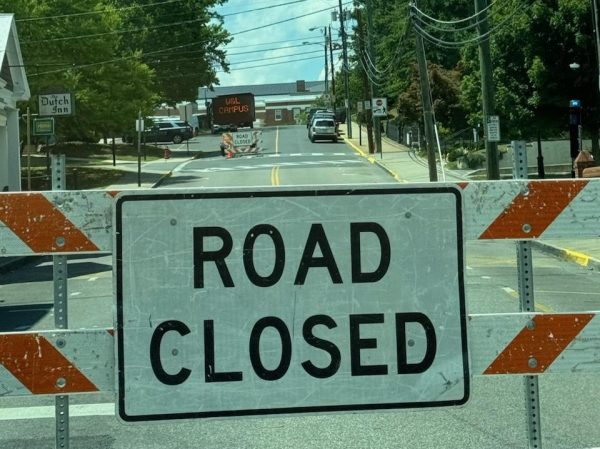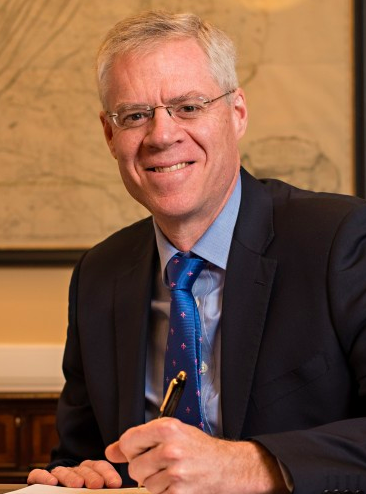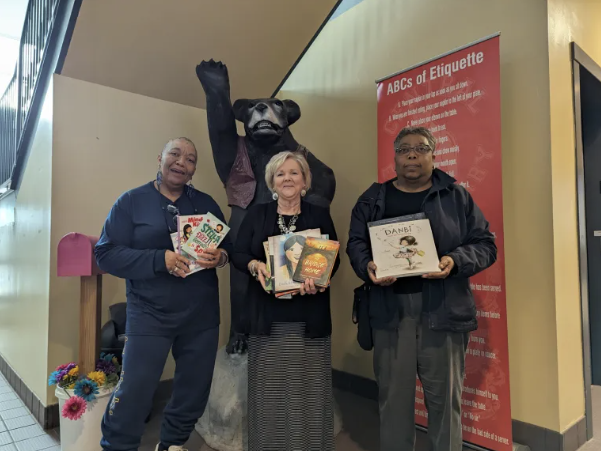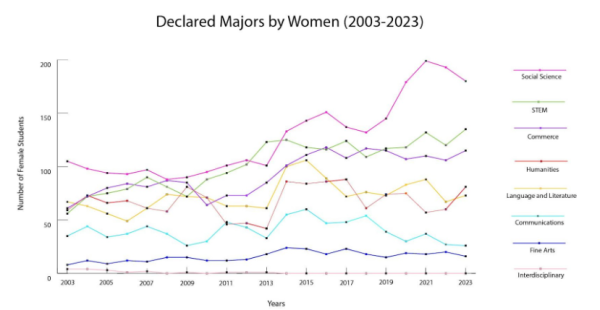W&L launches new sustainability projects
W&L is taking steps to become carbon-neutral and reduce fossil fuel and plastic usage on campus
The university installed solar panels on the top floor of the campus parking garage. The panels alone don’t generate enough power to fully match campus energy usage. Photo courtesy of The Columns
February 8, 2023
The Office of Sustainability and Energy Education rolled out major sustainability initiatives this year, including a new solar project, a ban on plastic water bottles on campus, and a move away from fossil-fuel powered heating.
Many of these decisions were made under new leadership. Jane Stewart was named the new director of the office this spring. She has been working on Washington and Lee energy conservation programs since 2011, and co-chairs the University Sustainability Committee.
In 2007, Washington and Lee made a commitment to become carbon neutral by 2050, and the university has already reduced greenhouse gas emissions by over 40% since then, according to the Sustainability website.
Stewart said that she feels really confident that the university will live up to this commitment.
“And I feel pretty confident that we’re going to accomplish it a lot sooner than 2050,” she said.
This spring, Washington and Lee partnered with solar development company SunEnergy1 to begin construction on an off-site solar array located in North Carolina. Stewart said the array will produce as much electricity that is used by the university in a given year, and will feed into our regional energy grid.
“When we look at our campus carbon footprint, electricity has historically been the biggest piece of our emissions profile,” she said. “This project has given us the opportunity to address that aspect of our emissions in a really impactful way.”
The solar project is currently under construction, and Stewart is hopeful it will be completed by early next year.
Goodbye to Plastic Bottles
Washington and Lee also ended the sale of plastic, single-use bottled water on campus, beginning this term. The move was accompanied by an increase in the number of bottle-filling stations on campus and a decision to give all first-year students a voucher for a free, reusable Hydro Flask water bottle.
Jules Seay, ’24, former class representative for the University Sustainability Committee and current sustainability chairman for Alpha Kappa Alpha, helped draft the report about banning plastic bottles.
Seay explained that although it’s easy to compost at Washington and Lee because the university has its own system on campus, recycling plastic in Lexington is more difficult because there are not many recycling centers.
“We should eliminate at least 11 thousand plastic bottles that would otherwise have gone into the waste stream and hopefully—and so far the feedback indicates this is true—we can do that without really having inconvenienced anybody,” Stewart said.
Seay said that giving first-years vouchers for Hydro Flasks would benefit the environment without putting strain on students to make big changes in their regular routine.
“It’s fun, it’s trendy, and people are kind of already doing it,” she said. “That’s kind of why we targeted it—because it’s easy to implement without having to educate a whole bunch of people on science and pollution.”
Keeping W&L Warm
Stewart also said that Washington and Lee is beginning to take steps towards moving off of fossil fuels in their power plant for heating.
She said that the university currently uses a steam-based heating system, which is powered by natural gas. But they are looking to gradually move to a system based on low-temperature hot water, which can be powered by renewable or geothermal energy.
Carole Bailey is the director of Capital Projects, a group that manages Washington and Lee’s annual capital budget. She said that this process will begin with the new Master Plan construction. Natural gas use currently contributes to around 35% of our campus emissions, Bailey said.
“We’re upgrading our infrastructure to get away from natural gas,” she said. “We haven’t identified a timeline for full conversion, because that is a couple of decades worth—it’s going to take some time to do that.”
In the next four to five years, the goal is for there to be at least four or five buildings with heating systems converted from steam to low-temperature hot water, Bailey said.
“It’s really transformational that we’re even able to begin taking those steps right now,” Stewart said. “There are not a lot of campuses our size that are already embarking on that change.”
Beyond the changes happening on the administrative level, students are finding unique ways to make a positive environmental impact. For example, last week Seay hosted a t-shirt upcycling event with Alpha Kappa Alpha to combat clothes waste on campus.
“You don’t have to be a science major or environmental studies major to speak up,” Seay said. “Everyone should have an input on sustainability on campus because it affects all of us one way or another.”
Stewart said that her office hopes to help students see how sustainability initiatives can be implemented in real life, along with the challenges surrounding them.
“This solar project that we were finally able to do, there were so many obstacles that seemed insurmountable, and we ended up taking a different approach than we initially even knew existed,” Stewart said. “Something that I’m really hopeful that this office will be able to do more of is to make all of our initiatives completely open and transparent for students and professors to use as case studies.”



